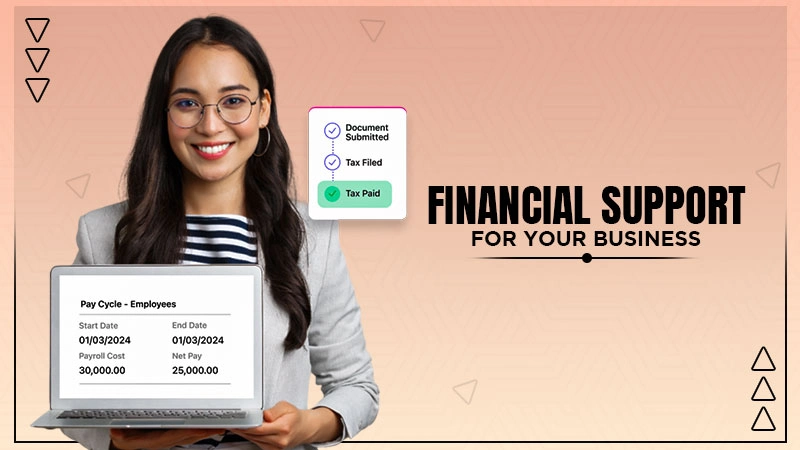Any late registration will result in a penalty. Parties can get a waiver if a reasonable reason for the delay is submitted.
Recently, people have been preferring to work for themselves over working for an employer without knowing that they have to register for self employment. Over to that, individuals who know they have to register themselves don’t know how to register as self employed?
The process might seem difficult at first, but proper knowledge and guidance can get you registered on the first try. So, let’s directly hop onto who is considered self-employed, followed by its importance, the registration process, the taxes paid by them, and the common mistakes made in the process.
What Does Self Employed Mean?

Self-employed means working for yourself while being solely responsible for all the successes and failures. This term is used for people who choose to work for themselves rather than under an employer.
A self-employed individual is responsible for tasks like operating, bookkeeping and accounting, management, searching for clients, compliance with the laws, and paying taxes.
To make it clearer, we have mentioned some situations that make this confusion more obvious to you:
- Owning and operating a business.
- You manage multiple customers and clients without getting a monthly salary or wages.
- You make an income exempt from PAYE taxes on the rendered goods and services.
- You can choose to hire other people for assistance, , managing their payments through proper payroll services.
Moreover, holding both self-employed and hired-by-an-employer status is also possible when you work as an employee and also do freelance work in the meantime.
Importance of Registering as Self-Employed
Registering under the records of HMRC is a crucial process for all self-employed individuals, as it helps in keeping the income and tax records updated with the authority. Let’s move forward and deeply understand the significance of registering as self-employed.
- Maintaining Legal Compliance: Self-employed registration makes you adhere to all the relevant laws and regulations. It protects your business from all the fines, operational disruptions, and legal actions.
- Effective Financial Management: When you register for self-employment, it brings organized financial management along with it. This change can be witnessed in areas like opening business bank accounts, tracking expenses, and preparing for tax filings.
- Multiple Benefits: Individuals get multiple benefits when they register as self employed UK. These benefits are substantial and include tax deductions on expenses, qualification for business loans, etc.
- Builds Credibility: Customers and clients find a registered business more trustworthy and legitimate.
When to Register for Self Employment?
No matter if you are employed by someone or self-employed, everyone is required to register themselves for self-assessment and Class 2 National Insurance before 5 October 2025, especially if you have sent your first tax return. This applies to all individuals and businesses that started working before 5 October. If you do not register before 5 October, penalties and fines will be charged.
So, if you want to avoid all the possibilities of getting fined, make sure to register as quickly as possible.
How to Register as Self Employed?
Let’s now look at how to register as self employed. The process involves the following 3 steps:
Check If You are Required to Register
All earning individuals are required to check whether they are eligible to register as self-employed or not. Defining this can be difficult for individuals with complex ways of earning. If you are confused about whether you are self-employed or hired by an employer, check out the HMRC’s employment status tool for your tax filing.
If the tool confirms registration, head to the next steps for self employed registration.
Create an Account or Sign Up in the Government Gateway Account
After it’s confirmed that you are required to register for self employment, you just need to head to the HMRC’s official website and sign up via the Government Gateway ID. This will require you to enter your email ID and the confirmation code sent to the same email address.
Make sure to keep following the instructions displayed on the screen to complete the account creation process for the Government Gateway ID.
Register Yourself via Government Gateway
Lastly, you need to sign in with the Government Gateway user ID to register as self employed. The following information and documents need to be submitted to the HMRC.
- Establishment date of the trading
- Self-assessment tax
- Your National Insurance Number
- Phone number and house address
- Details about the self-employed work
After you complete these steps, a UTR number of 10 digits, also referred to as a tax reference number, will be issued to you for tax payments.
Self Employed Registration for Sole Trader
Usually, people confuse being self-employed and a sole trader, but they are not. A sole trader is someone who works and manages all the activities without any involvement in other businesses. In this case, you can’t register as self-employed; penalties will be charged.
The following are the different steps to register as a self-employed sole trader. Carefully go through these steps and get yourself registered.
- Go to the official HMRC website and read the publications to check if sole trader is the right term for your business.
- Now choose your business name as per the rules and regulations of HMRC.
- After deciding on a business name. It’s time to get ready with all the necessary documents required for self employed.
- The next step is understanding the processing and conditions to register as a sole trader.
- Once you understand the complete process of registering as a sole trader, it’s time to check what taxes apply to you as a sole trader.
- Lastly, it all comes down to tax planning that includes estimating your tax liability, finding out your income tax rate, and , and preparing your year-end accounts.
Taxes to Pay if You are Self Employed
Once you are registered as self employed, you are liable to pay certain taxes. The following are taxes that a self employed individual needs to pay, with their deadlines and taxability.
- Income Tax: A tax charged on the total earnings to help HMRC assess how much tax you need to pay. Everyone is required to pay their income tax liability before 31 October if you are filing it on paper for the previous tax year. The deadline for online registration is 31 January.
- National Insurance Contribution: If your annual profit is over £12,570, you are required to pay Class 4 National Insurance. Now, you might be thinking, what about Class 2? As of 6 April 2024, no self-employed taxpayers are required to pay the Class 2 National Insurance.
- VAT: Businesses must manage their VAT payments accurately, alongside maintaining clear accounts receivable and accounts payable records.
Mistakes to Avoid in Self Employed Registration
Look at these common mistakes that individuals make during self employment registration in the UK.
- Neglecting Deadlines: Missing the deadlines for submitting necessary information and documents to the HMRC can lead to being fined and penalizing your business. These fines can’t be waived and need to be paid in full. Hence, make sure to keep an accurate track of the deadlines with reminders and tools.
- Not Disclosing or Partially Disclosing Income Sources: Another common mistake that self-employed individuals make during the registration process is not disclosing or partially disclosing their income sources. This could lead to a 50% fine on the undisclosed income.
- Transfer of Incorrect Information: Filling out the registration form with incorrect information is one of the most common mistakes made by individuals. Such mistakes can create delays and rejections in the applications.
- Displaying the Wrong Business Structure: Utilize professional management accounts support to clarify your structure.
- Tax Identification Number (TIN) Error: While talking about mistakes in self-employed registration, we can’t ignore the tax identification number error. This involves mismatching the recipient’s name with the TIN, which could lead to incorrect filing penalties and trigger withholding obligations for your organization.
Bottom Line
If you are earning more than £1,000 annually in the UK on your own without getting employed by someone, you are required to register as self employed. The process includes a follow-up of 3 simple steps that can be easily remembered. Make sure to thoroughly read the steps and not make the common mistakes during the registration.





